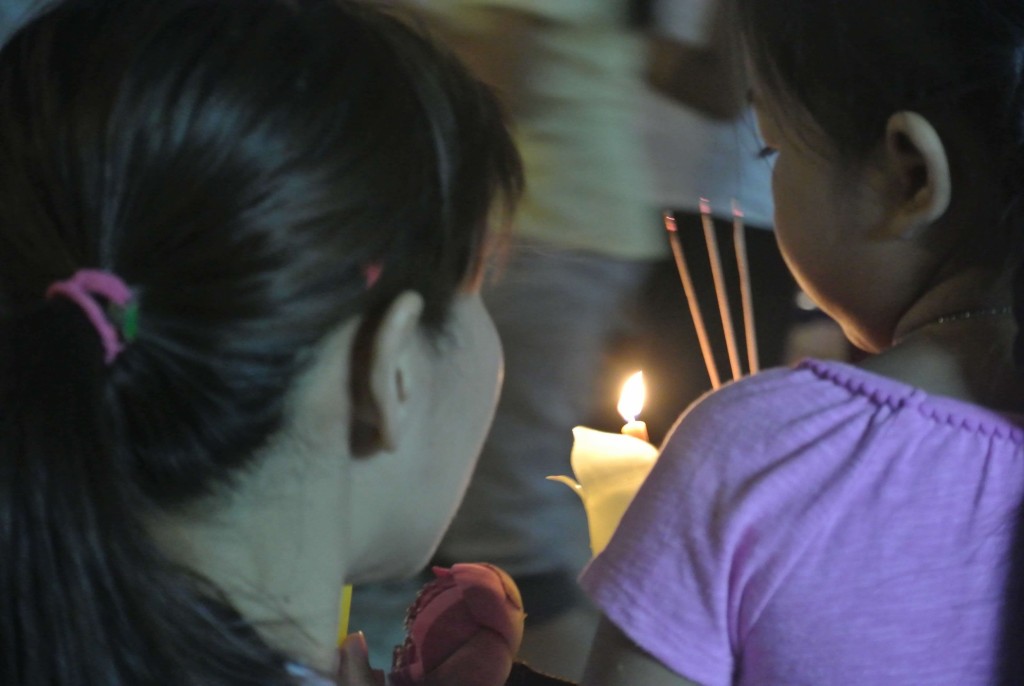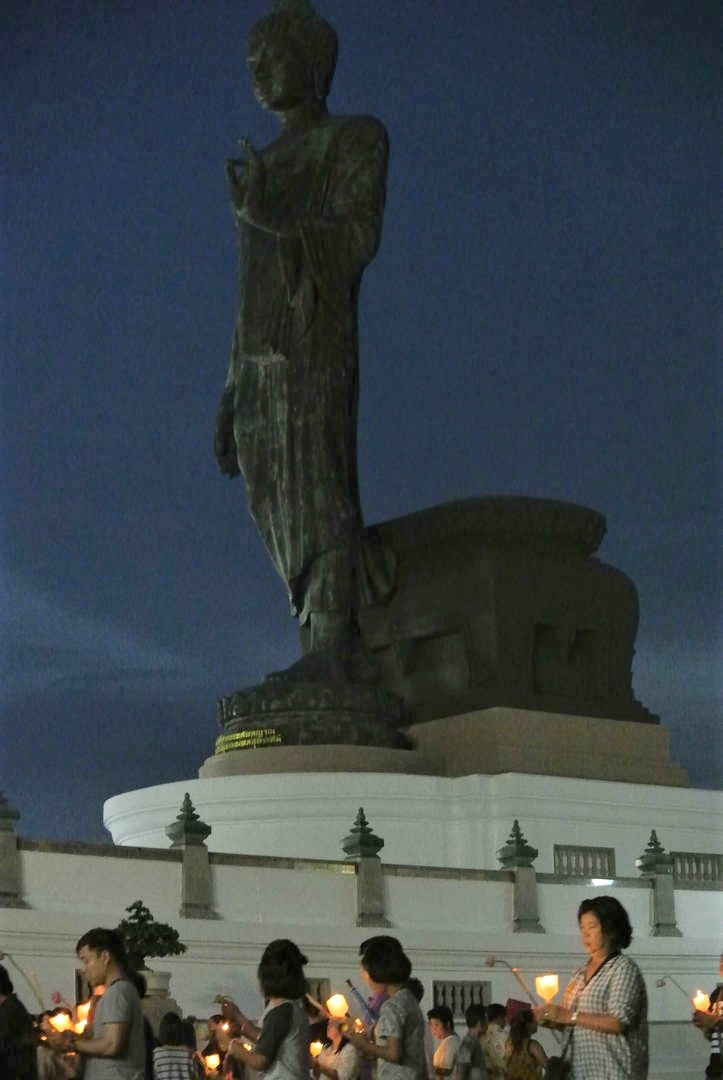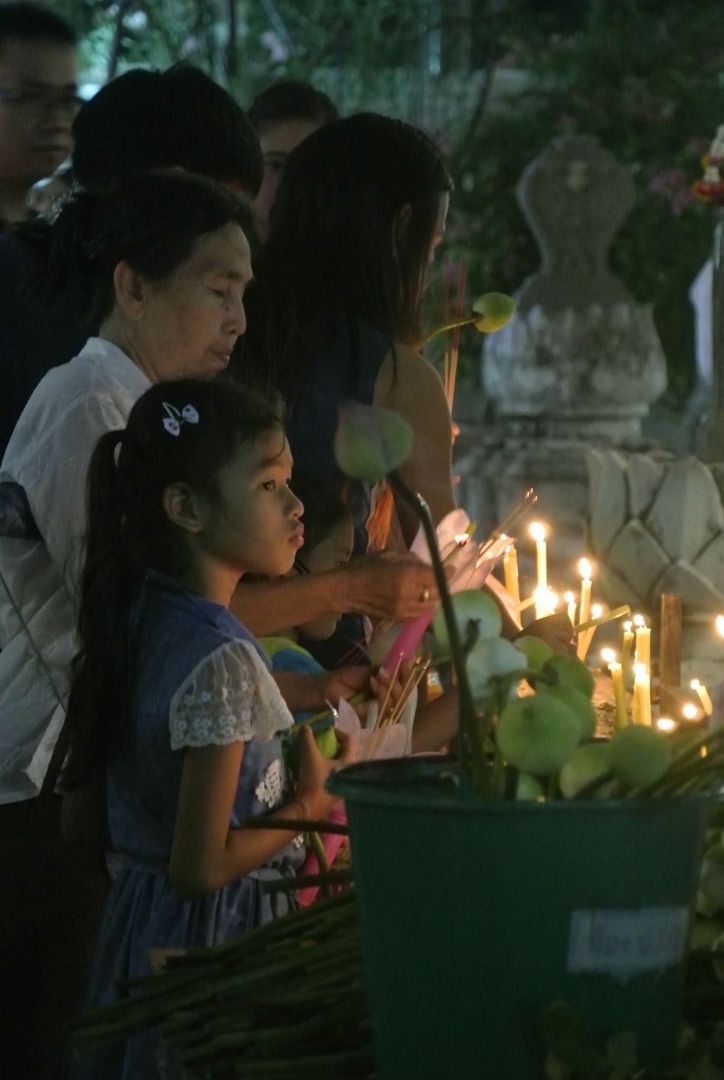
Visakha Bucha 2025, Buddha's Illumination Day
Visakha Bucha is a day of great significance in Buddhism, especially in Thai society. Learn more about this special day in Thailand.
Visakha Bucha 2025: Buddha’s Illumination Day in Thailand
Visakha Bucha Day is a significant and emblematic day for Buddhists, symbolizing the triple celebration of Lord Buddha’s birth, enlightenment, and death. This day, which coincides with the full moon of the sixth lunar month, is venerated through merit-making rituals and candlelight processions in Thai monasteries.
Originally, Visakha Bucha Day commemorates the birth of Prince Siddhartha, the future Buddha, around 2,600 years ago. Thirty-five years later, on the night of a full Visakha moon, he attained enlightenment after an intense spiritual quest. Finally, at the age of 80, the Buddha passed away in Kusinara, also during the full moon of the sixth lunar month. This convergence of three major events lends Visakha Bucha Day an incomparable sacredness for Buddhists worldwide.
Established as a public holiday in Thailand after the Second World War, Visakha Bucha Day is marked by the traditional Vien-Tian ceremony. Devotees make three rounds of the temples with candles, incense sticks, and flowers as a sign of respect for the Buddha. Houses and temples are adorned with Buddhist flags and paper lanterns, while the night sparkles with oil lamps and fairy lights.
Visakha Bucha date in 2024: Wednesday, May 11, 2025.
Visakha Bucha, a Symbol of the First Day of Retreat
A day of hope and prayer, it also marks the time when monks temporarily withdraw to their temples. This three-month retreat is both a spiritual practice and linked to agrarian traditions.
May is also the time when planting begins. Normally, monks set off every morning to receive alms, going from house to house, and receiving food, clothes, medicine, and money.
In rural areas, these comings and goings pose the risk of monks unwittingly walking into newly sown fields. To avoid this, monks stay in the Wat during this period. On Visakha Bucha, the faithful bring donations to provide for the monks’ future needs. In this way, the roles are reversed.
How the Day Unfolds
All day long, devotees come to the monastery to leave offerings and receive blessings from the monks to bring them luck and happiness. The ritual is quite simple: you kneel before the monk, presenting your offering. The offering is placed on a small cloth, which the monk then pulls towards himself. You do not give directly from hand to hand, especially if you are a woman.
Once the gift has been accepted, the monk recites a mantra, blesses the recipients, and hands over a small bowl of water. The devotee then sprinkles this water on a tree. In this way, the spirits of nature can take charge of bringing happiness and felicity to the devotee.
The Collective Round of Visakha Bucha
Beyond the ritual of giving that takes place inside the temples, another significant ritual takes place outside. While the first is a relationship between the devotee and the community of monks, this one is more collective.
Upon arrival at the temple, the devotee is given a lotus flower, three sticks of incense, and a candle. Thus adorned, they walk three times clockwise around the temple. This is a time for family, friends, and acquaintances to pray, discuss, and meditate together. Once the rounds are completed, the sticks, candle, and flower are placed in front of the altar.
These processions begin at sunset and last until around 11:00 pm.
Visakha Bucha, a Special Day
Visakha Bucha is a sacred day for Buddhists, especially in countries where Buddhism is the state religion. In Thailand, Visakha Bucha is accompanied by several restrictions, such as the limited sale of alcohol in many places.
More generally, this day calls for special attention to good behavior. The great precepts of Buddhist morality must be respected so that the wisdom of Visakha Bucha can illuminate the believer’s soul.
Where to Celebrate Visakha Bucha?
In Bangkok, most Wats are open late into the evening for Visakha Bucha celebrations. There are many Wats, and to narrow down which temples to visit, you can refer to our list (see additional information).
For our part, there are certain places we recommend to observe the rituals of Visakha Bucha:
In Bangkok

Wat Traimit, the Temple of the Golden Buddha
Wat Traimit, also known as the Temple of the Golden Buddha, is one of Bangkok’s primary attractions, not solely for its architecture, but primarily for its remarkable solid gold Buddha statue.
- Address: 661 Charoen Krung Rd, Talat Noi, Samphanthawong, Bangkok 10100 - Map here
- How to get there: Take the MRT station Hua Lamphong then walk (10 minutes)
- Proper attire required

Wat Yannawa and its traditional health center
Situated in the heart of Bangkok, just 200 meters from the Saphan Taksin BTS station, Wat Yannawa is divided into two main sections: buildings dedicated to worship and those designated for medical care.
- Address: 40 Charoen Krung Rd, Yan Nawa, Sathon, Bangkok 10120 - Map here
- How to get there: Take the BTS station Saphan Taksin and walk for 5 minutes, or take a boat and disembark at Sathorn Pier, then walk for 8 minutes.

Wat Intharawihan
Wat Intharawihan, also known as Wat Intharavihan (in Thai: วัดอินทรวิหาร), is one of Bangkok’s must-visit temples. At its core lies a towering 32-meter-high Buddha statue.
- Address: Unnamed Road, Bang Khun Phrom, Phra Nakhon, Bangkok 10200 - Map here
- How to get there: Take a boat and disembark at Thewes Pier (N15), then walk for 10 minutes.
- The Wat is not far from Khao San Road

Wat Phitchaya
Wat Phitchaya is not just a museum; it’s a living space where daily ceremonies and sacred rites take place. In addition to the Ubusot, which attracts many devotees, a modern building at the rear welcomes believers who can offer their devotions at the base of a monumental stupa.
- Address: Somdet Chao Phraya Rd, Somdet Chao Phraya, Khlong San, Bangkok 10600 - Map here
- How to get there: Take a boat and disembark at Memorial Bridge (n°6), then either take a taxi, motorcycle taxi, or enjoy a 20-minute walk, which is the most appealing option.

Wat Bukkhalo
Off the beaten tourist track, Wat Bukkhalo rests on the banks of the Chao Phraya River, providing one of the most picturesque spots to witness the sunset over the capital.
- Address: Charoen Nakhon 63 Alley, Dao Khanong, Thon Buri, Bangkok 10600 - Map here
- How to get there: Take the BTS station Talat Phlu (stop S10) and then a taxi. Alternatively, you can take bus number 6 or 17.

Wat Hua Lamphong
Right next to the Sam Yan MRT station, in the heart of the Silom district, Wat Hua Lamphong is a temple where you could once see animals in a small menagerie. During the pandemic, the animals were moved, but with the situation stabilizing, perhaps they will return to the temple. In any case, it remains a beautiful place for religious celebrations.
On the outskirts of Bangkok

The World Center of Buddhism Buddhamonthon
This is one of the world’s most imposing Buddhist centers and the site of a major annual procession. A bronze statue of the Buddha, over 15 meters high, symbolizes the heart of Buddhamonthon. Thanks to its royal recognition, the statue is one of the most venerated in Thailand.
FAQ about Visakha Bucha 2025
What is Visakha Bucha Day?
Visakha Bucha Day commemorates the birth, enlightenment, and death of the Buddha.
When is Visakha Bucha 2025?
Visakha Bucha 2025 will take place on Wednesday, May 11, 2025.
Where to celebrate Visakha Bucha in Bangkok?
Celebrations are held at major temples like Wat Traimit and Wat Yannawa.








